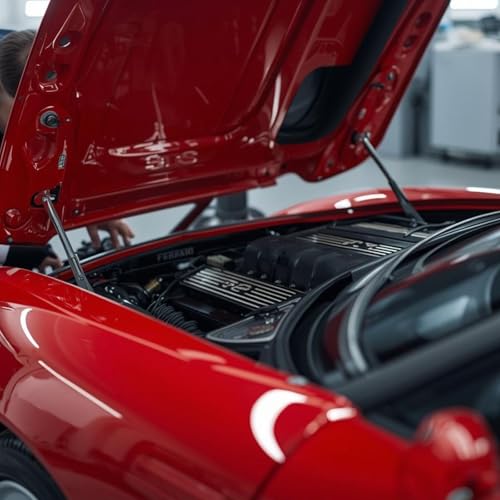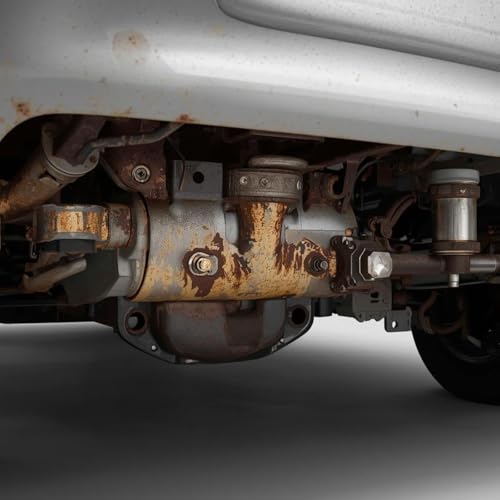Case Study Analysis: Ferrari 296 Recall (NHTSA ID: 25V716000)1.0 Executive OverviewThis formal case study analyzes the Ferrari North America recall (NHTSA ID: 25V716000), deconstructing the technical defect, potential risks, and prescribed remedy based exclusively on the official filing. The analysis begins with the foundational identification and scope of the recall.2.0 Recall Identification and ScopeThe accurate identification of a recall's scope establishes the fundamental parameters of the event, defining the responsible manufacturer, the affected vehicle population, and the component systems involved. These details for recall 25V716000 are as follows:IdentifierDetailsManufacturerFerrari North America, Inc.NHTSA ID Number25V716000Manufacturer Recall NumberRC 93Affected ComponentsENGINE AND ENGINE COOLINGAffected Vehicles2025 296 GTS and 296 GTBPotential Number of Units Affected6With the specific vehicles and limited number of units identified, the analysis can now focus on the underlying technical problem that necessitated this recall action.3.0 Technical Problem AnalysisThe defect's root cause, a failure in assembly-line quality control, highlights a critical vulnerability in the vehicle's engine and cooling system. Ferrari's investigation pinpointed a specific mechanical failure as the source of the defect.The technical defect stems from an assembly process error. The core issue is precisely described as follows:The nut securing the oil filter connection to the turbocharger oil feed pipes was tightened incorrectly and may cause an oil leak.The direct consequence of this defect is a potential oil leak from a critical engine component. This single point of failure introduces a significant vulnerability within the engine and engine cooling system. This oil leak transforms a minor assembly defect into a critical fire hazard.4.0 Risk Assessment and Safety ImplicationsAn assessment of a defect's consequences determines its severity and the required urgency of the response. In this case, the mechanical failure creates a direct and severe risk to vehicle occupants, necessitating an immediate owner directive.The primary risk associated with the potential oil leak is severe. As stated directly in the recall documentation, "An oil leak near a combustible source increases the risk of a fire." This elevates the defect from a potential performance issue to a critical safety hazard.In response to this significant risk, a "Do Not Drive Warning" has been issued to all owners of the affected vehicles. This measure is reserved for defects with a high potential for severe consequences and is a critical step to mitigate the identified fire risk. The directive instructs owners to cease operating their vehicles immediately until a repair can be performed, prioritizing owner safety until the official remedy is implemented. With the immediate risk contained through this directive, the focus shifts to the official remedy required to make the vehicles safe for operation.5.0 Corrective Action and Remediation PlanThe remediation plan for this recall is defined by a clear corrective action, a no-cost provision for owners, and a structured communication strategy. This plan is designed to ensure full compliance and restore vehicle safety.The official remedy is a multi-step process designed to correct the defect:1. Immediate Owner Action: Owners are advised not to drive their vehicles until they have been repaired.2. Official Repair Procedure: Ferrari will verify tightness and retighten the attachment nut.3. Cost to Owner: The remedy will be provided free of charge.Owner Notification and SupportTo ensure all affected parties are informed, Ferrari has established a clear communication plan. Owner notification letters detailing the recall and required actions are expected to be mailed on December 20, 2025. For immediate inquiries, owners may contact Ferrari customer service at 1-201-816-2668.Ultimately, the remediation plan provides a comprehensive solution, addressing the technical fault, owner communication, and cost liability.6.0 ConclusionThe analysis of NHTSA recall 25V716000 documents a contained but critical safety event. A manufacturing defect, specifically an incorrectly tightened nut on an oil filter connection, created a significant fire risk for six 2025 Ferrari 296 vehicles. The resulting corrective action included an immediate "Do Not Drive" warning and a straightforward, no-cost remedy to retighten the component. This case demonstrates that even minor assembly-line errors can necessitate a comprehensive recall response to mitigate severe safety risks and ensure regulatory compliance.Become a supporter of this podcast: https://www.spreaker.com/podcast/vehicles-recalls--6499215/support.
Más
Menos
 11 m
11 m 11 m
11 m 11 m
11 m 10 m
10 m 13 m
13 m 15 m
15 m Oct 6 202514 m
Oct 6 202514 m 12 m
12 m

